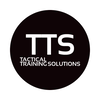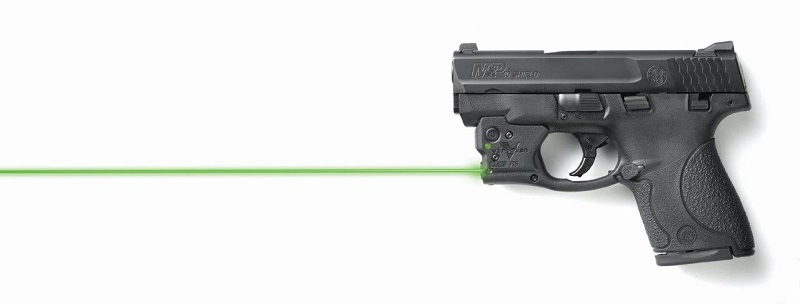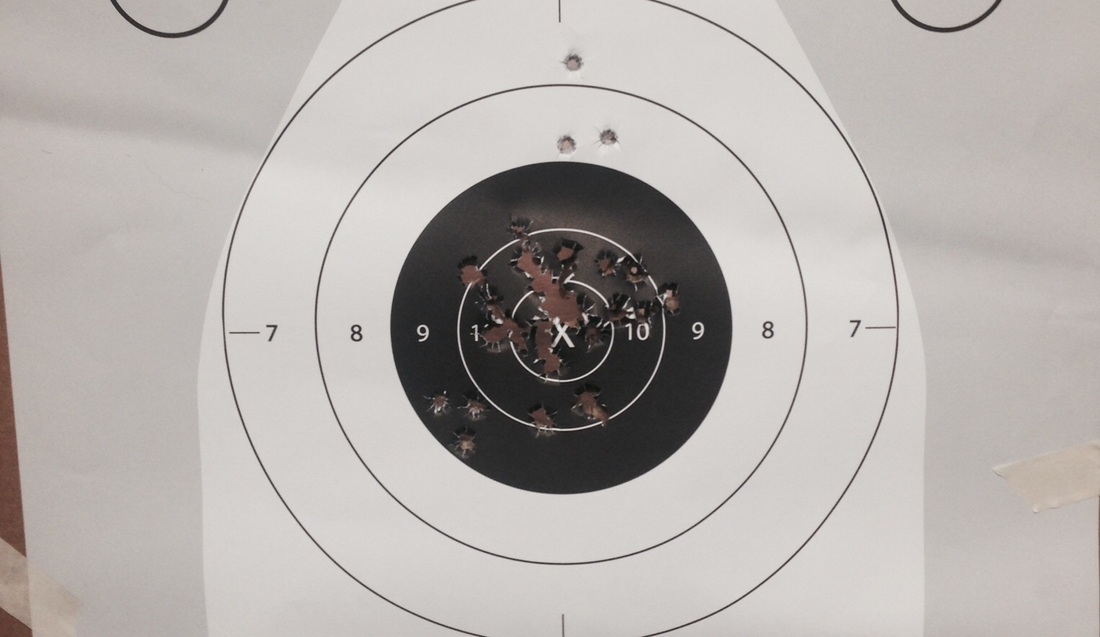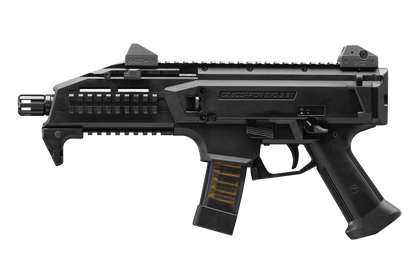
Whether as a pistol, a pistol with a Sig Brace ir an SBR, this is a bad ass little gun! The best part is that it is going to have a very affordable price, CZ is saying $849 MSRP that will put the street price $100-$200 less! While .223/5.56 and 300BLK rifles have dominated the home defense and tactical scene for recent history, the Pistol Caliber Carbine (PCC) has a long history of pulling it's weight. With the new Sig Arm brace, this can stay classified as a pistol but have 99% of a rifles functionality. From CZ-USA: Finally available for public consumption is the much anticipated Scorpion sub-gun. Imported as a pistol, it is a blowback-operated semi-auto in 9mm with a short 7¾” barrel. Equipped with our newly designed low-profile sights, its rear sight has four different aperture sizes for everything from close quarters to way out there. The sights ride on an 11” Picatinny rail perfect for mounting optics.
Pistol Caliber Carbines are the new hotness this year. What do you think?
Here is some exciting news from our friends at the bang switch!
HERE IS SOME EXCITING NEWS FROM OUR FRIENDS AT THE BANG SWITCH!For many American shooters, the Israeli Galil rifle is something of an icon. It was originally manufactured and exported by Israel Military Industries (IMI) in the late 1980’s and early 1990’s. Around 1993 the rifle stopped coming into the country and shooters were left clamoring for originals that brought $4k or more on the used market or buying clones manufactured on U.S. made receivers using old military surplus parts kits.
During the Galil’s hiatus from the U.S. market it has continued to evolve which has kept the weapon relevant on the global military market. The Galil as we know it has been replaced by a more modern ACE series of rifles and the original Galil has been out of production in Israel for several years now. The good news is that IWI (Israel Weapon Industries) is introducing the new Galil ACE into the U.S. market in February of 2015, just after SHOT Show. Two models in 7.62×39 caliber will be available, a 16″ barreled rifle and a 8.3″ barreled pistol which will have a side folding SB15 type brace system as an option. Both use standard AK magazines. BackgroundWhile lasers have been on weapons for decades, they have only started to gain real traction in the last 10 years or so. The first weapon mounted lasers (WMLZ) were large, dim and lacked battery life. Today we are seeing a whole new crop of WMLZs and leading the pack are small green lasers. While we are traditionally used to seeing red lasers in the stores and movies, they have some significant drawbacks. The biggest problem with red lasers is related to daytime visibility. Without getting into a scientific thesis on how the eye works it should suffice to say that the human eye can not see red as well as green. 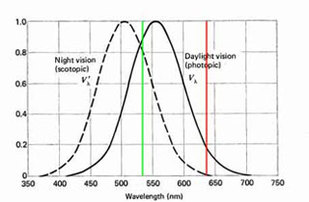
Before going any further, I have a confession to make. Throughout my career I have not been a fan of lasers in any other format that Infra-red lasers used in conjunction with night vision devices. In all honesty, it boils down to three reasons: 1. They only worked well at night (red lasers) 2. They were bulky 3. Most people I saw use them shot terribly After doing this review I can say, without a doubt, the first two reasons on the list have been wiped out... The third is not an equipment problem, it is an operator problem. Lasers do not and never will make up for a lack of fundamental skill with a firearm. Viridian R5 ReviewThe specific unit I used for this review is a Viridian R5-Shield mounted to my S&W Shield in 9mm. The package came with everything you would expect and more. Included were: - Trigger Guard mounted laser - Spare batteries - Small Torx wrench for installation - ECR Holster - Viridian Hat (may have been a special offer at the time) - Directions InstallationInstallation was a simple task. The laser housing unscrews into two halves (right and left). The two halves are snapped together on the trigger guard and tightened. From there you simply need to zero the laser. I did this initially by aiming across the basement at a light switch and placing the dot atop the from sight. This is how I have rough zeroed red dots on AR15s for some time. First ImpressionsAfter getting the laser installed it was time to do some dry fire and get a feel for how it worked. The unit features ambidextrous operation with on/off/mode switches on both sides. One of the unique features Viridian uses is simply called "Instant On." This feature combined with the supplied ECR holster or by using their upgrade kit stuck to your holster makes the worry about operating switches and buttons under stress moot. The system is actually quite simple; a magnet in/on the holster activates an internal switch, turning the laser on and off when holstered or unholstered. The laser itself has two modes: constant on and pulsing. I have a strong preference for the constant on mode, but that will vary by user. When drawing from the Enhanced Combat Readiness (ECR) holster the laser turns on to the mode it was in when holstered. You can see a great review of the ECR holster below from Rob Pincus of Personal Defense Network. I really enjoyed the instant on feature because it overcomes one of the major drawbacks of many WMLZs, having to remember to turn it on in the heat of a violent confrontation. The next thing I noticed was how bright the laser was! This thing can light up a dark room, There is no guessing where your weapon is pointed, as you can see a green light saber projecting from the front of the pistol. At The RangeAt the range my first task was to "zero" the laser. Starting at 15 feet I shot 5 rounds at a 2" circle and found my point of impact was high and right. With a few quick turns of the adjustments I had the sight shooting dead on. Moving the target back to 10 yards the zero held. I shot about another 100 rounds using the laser exclusively and found it to be extremely fast and accurate. You can see the target below that has about 30 rounds though is from 10-25 yards. Shooting at past about 15 yards required a bit more concentration because you can see the laser bouncing around like a squirrel on crack. The temptation to yank the trigger at the exact moment the dot crosses where you want to hit is strong. You need to relax and have the same clean trigger press that you would use with iron sights, ignoring the movement of the dot. You can see 3 of my 5 shots from 25 yards hit high, I will blame the Starbucks I had before hitting the range. Final ThoughtsI can say after spending some time with this unit that it is a great choice for anyone carrying a pistol for self defense. If you are a new shooter, I strongly encourage you to learn to shoot well with iron sights before using this or any laser. Relying on an electric device device as your sole source of sighting a defensive pistol is never a good idea.
The R5 is available at the time of this writing for the M&P Shield, Ruger LC9 and LCP, Kahr P-series, Glock 42 and XDs. You can check them out here: http://www.viridiangreenlaser.com/ History and Evolution:
Red Dot equipped pistols have been around for over two decades. In the 1990 USPSA Nationals Jerry Barnhart used a red dot scope to win and the same year Doug Koenig won the IPSC World Shoot with a red dot equipped CZ. The first defensive gun I saw with a red dot was in a Kelly Mccann video back in the late 90's. He had a Doctor Optic mounted to a Glock 19 and I thought it was the most revolutionary thing I had ever seen. After getting one and shooting with it, I quickly lost interest. The window was too small, the optic was too fragile and I had no back up sights. |
